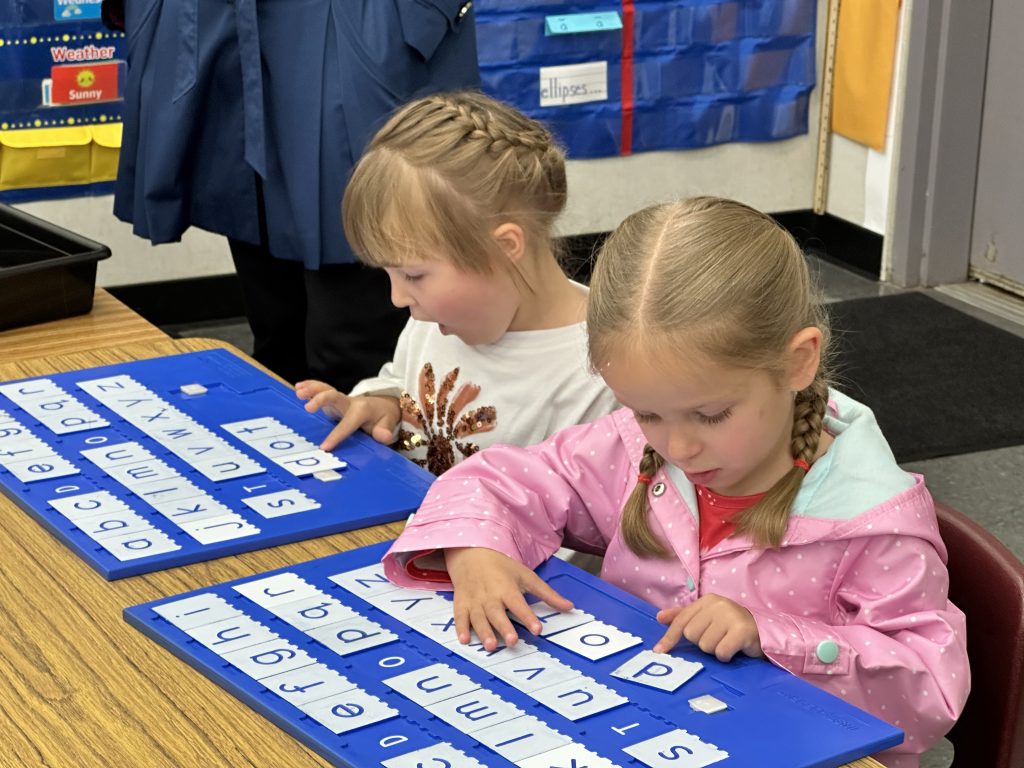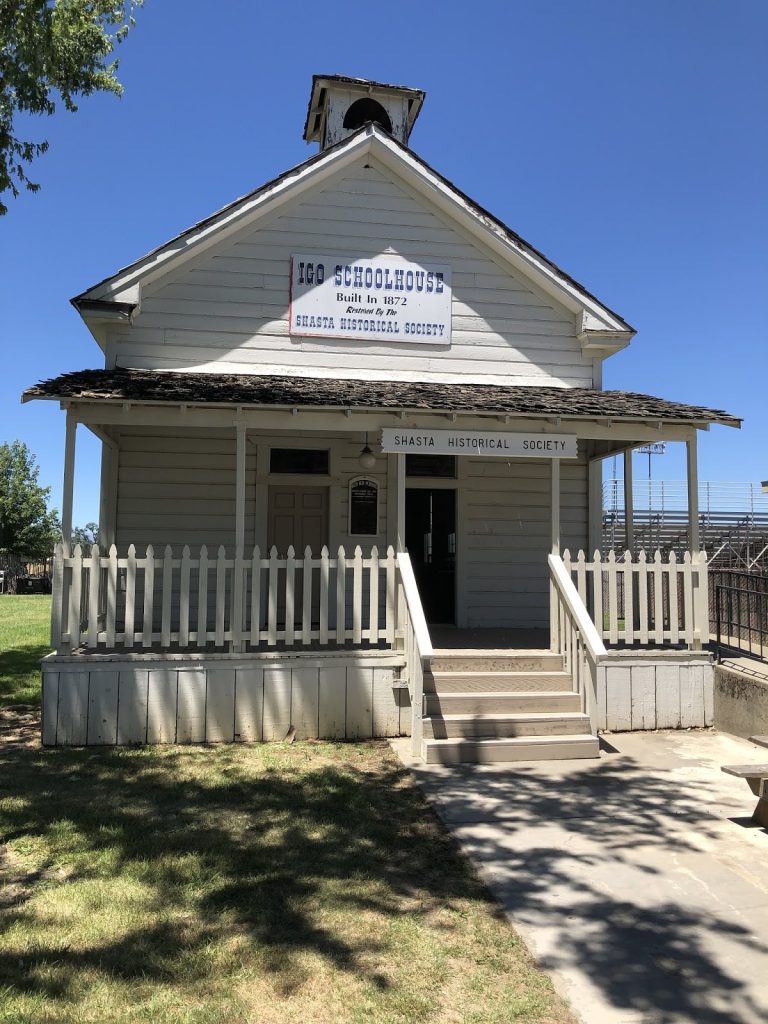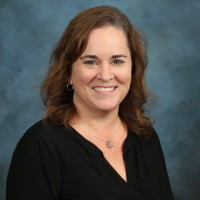Igo-Ono Elementary School
Support, Connection, and Lasting Impact

Introduction
Igo-Ono Elementary School located in Shasta County is just 11 miles west of Redding, but it looks a bit like the land that time forgot. The original one-room schoolhouse, built by a miner in 1872, included a well, an outhouse, and a wood stove. That schoolhouse is a historical display now, but on that same site today, two teachers serve 29 students in transitional kindergarten through eighth-grade, with support staff who make it possible to break students into smaller groups to meet individual needs. This is critical for a student population where most qualify for free or reduced lunch, a few are unsheltered, and some are English language learners.

Though the school is tiny, administrators are determined to provide students with opportunities that their peers in larger schools enjoy, including music (recorders and strings), robotics, a “tech lounge,” and various recreational activities. A resource teacher and counselor are on campus twice a week. Instructional assistants serve as Igo-Ono’s after-school program facilitators to build consistency and strengthen relationships with students. When students move onto high school, school staff want them to be skilled in adaptability, communication, critical thinking, empathy, perseverance, and responsibility.
However, a small, rural school also faces its share of unique challenges, and in Shasta County, it doesn’t get much smaller or more rural than Igo School. It’s not easy for some families to access services of any kind beyond the school, especially if they don’t have a vehicle. Their lone option for groceries is the Igo Store, unless they want to head west into town. And although the school proudly serves as a community hub, some problems are well beyond its ability to solve. “Schools have always had a heart to help families, but we haven’t always had direct access to resources,” said Principal Kim Miller.
Then Came Community Connect
This program was born from conversations with about 75 educational and community leaders who started to dig into root causes of chronic absenteeism. One discovery: All schools have resources and supports, but sometimes a family’s needs fall outside of the school’s sphere of influence, and the school simply can’t follow up with struggling families in the deep way that they felt they needed to. Community Connect Coordinators now stand in the gap between a family and the services they need outside of the school environment.
The Community Connect Coordinator continues to work with the family to build their strengths, resolve concerns, and link them to the community-based services and supports that sometimes feel out of reach for an overwhelmed parent.”
Today, Igo-Ono Elementary School is one of 29 campuses with a Community Connect Coordinator on campus. As the saying goes, “If you’ve seen one Community School, you’ve seen one Community School,” and the same applies to Shasta County’s diverse team of Community Connect Coordinators, who are employed by the Shasta County Office of Education. Community Connect Coordinators serve as the school-site liaisons between SCOE mental health clinicians and students and families. Educated in Shasta County public schools himself, 22-year-old Brayden McClung is an outdoor adventurer, a baseball player, and a skilled photographer with a knack for building trusting relationships with children and adults alike. McClung is well-known by Igo’s students and their families. He’ll often zip out to the playground to play with the kids, and his unassuming, friendly demeanor and ready smile also help him build quick rapport with families when he reaches out. Miller specifically selected him to serve this specific school as a Community Connect Coordinator because he had worked there before and already had relationships with many of the families.
When the school identifies that a student is struggling in one of the ways that Community Connect can help, they make a referral to the program, and the coordinator works to connect with each family using multiple methods – email, text, phone, postal mail, whatever it takes to let the family know that they are available to serve as partners and provide support, helping find solutions to whichever challenges the family is facing. This free, confidential case management and care coordination is free, confidential, and completely voluntary, and parental consent is required.
Once a family is connected, the magic starts to happen, and the family leads the way. First is a client-focused, strengths-based assessment. He asks, what are some things that could help you? Would you like to grab some food from the food pantry here in my office? Do you need a warm coat or some extra clothes from our clothing closet? Could you use some parenting support? Once needs are identified, they develop a plan to move forward together. Some families readily sign up for every service McClung has to offer, and others accept one service but aren’t quite ready for another. That’s fine – they stay in touch, and if their needs and wishes change, McClung is there to take that next step with them. The relationship is ongoing, and the Community Connect Coordinator continues to work with the family to build their strengths, resolve concerns, and link them to the community-based services and supports that sometimes feel out of reach for an overwhelmed parent.
The Results Have Been Remarkable
For the 2023-24 school year, Community Connect received 1,735 referrals from across the county. These referrals included 778 for behavior, 378 for attendance, and 579 for other reasons. Community Connect has successfully contacted 82 percent of them so far, and of those, a full 85 percent have accepted services. The majority of referrals are for counseling, mental health services, and basic needs. And once families have their basic needs met, the students quickly feel the impact, and behavior, attendance, and mental wellness improve.
Community Connect and the work of McClung and Miller epitomizes the work of community schooling: ensuring that students’ physical, mental, and emotional needs are met enables them to fully access the rich educational opportunities provided to them at school.”
One of McClung’s families was struggling with the dynamics at home; they couldn’t sit at the dinner table without arguing, and the children were carrying that anger to school with them. He connected them with some parenting resources, but the family wasn’t ready, so McClung gave them time and space, but never stopped checking in. Eventually, they started attending parenting classes regularly, the children started getting some counseling, family counseling was on the horizon, and “we have noticed a dramatic shift in the students’ behaviors,” McClung said. There’s still work to be done, but “just being on the right path has given (the mother) so much more energy and love to pour into her family.”
Because parenthood doesn’t come with a manual, a Community Connect Coordinator’s encouragement to take advantage of parenting resources is often welcomed. “Everybody loves their child, but sometimes you just don’t know (what to do),” Miller said. “Maybe you didn’t grow up with parents who were the greatest at parenting or providing structure, so having opportunities to learn a different way – sometimes people haven’t had that opportunity, and it’s great that we can provide that for them.”
In perhaps McClung’s biggest career challenge, he was connected with a family that was living in a trailer, then had to move into a tent. McClung got them into transitional housing, which provided enough stability for the mom to look for apartments and fill out job applications. Connection with a food assistance program meant increased food security.
Said Miller about the mother: “She knows how many quarters you need to take a shower at Brandy Creek, and now she has a shower every day.” When the family was moving into transitional housing, “all (the teenage daughter) could talk about was that she was going to stand in the shower for 20 minutes and have a blow dryer to dry her hair.”
Several months later, the mother was reflecting with McClung about how far she had come. She looked him in the eyes and said, “I’m not totally sure why you care about us so much, but I have never had this level of support in my life, and you are helping us in ways I did not know [were] possible. You are changing my life.”
We are now able to really come alongside families, in partnership with their schools, and connect them with important services in the deep way that they need.”
Said McClung: “Words won’t do it justice for what I was feeling at that moment. I told her how much I appreciated that, but she has done this for herself and her family. You could see an overwhelming sense of pride she had gained. As the meeting wrapped up, I asked if she had plans for the rest of the day and she said, ‘The only thing I have to do today is be a better version of myself.’ Hearing this from someone who started the year in such a negative headspace gave me hope … She understands the mindset needed to accomplish any goal she desires.”
These are just a few stories McClung and Miller shared about the positive impact of the Community Connect program on Igo-Ono’s students and families, which is echoed at schools throughout the county. Community Connect and the work of McClung and Miller epitomizes the work of community schooling: ensuring that students’ physical, mental, and emotional needs are met enables them to fully access the rich educational opportunities provided to them at school. “We are now able to really come alongside families, in partnership with their schools, and connect them with important services in the deep way that they need,” Wendy Hall, SCOE Director of Continuous Improvement said.
Learn more about Shasta County in the issue introduction!
10 MINUTE READ
This case introduces you to a particular community school journey, which is intended to help you think about your own journey to create, develop, or support community schools. Furthermore, we’ve provided a discussion guide that spans the four features of the issue and includes discussion prompts related to the issues’s main themes.
RESOURCES
For further learning, check out these websites, reports, lesson plans, magazine articles, and more. These resources are curated to speak to different audiences, including teachers, researchers, policymakers, and the general public.
CITATION
Schuette, K. (2024). “Helping All Students Thrive in a Rural Elementary School: Igo Ono Elementary School.” Community Schooling, Issue 6, Fall 2024. Los Angeles, CA: UCLA Center for Community Schooling.
ABOUT THE AUTHOR

Kerri Schuette is the Communications Director for the Shasta County Office of Education. With nearly 30 years of experience in journalism and public relations, she loves sharing the meaningful impact of public education through storytelling.
ACKNOWLEDGMENTS
What an honor to share some of the innovative work happening in Shasta County. The inspirational leadership of retired Shasta County Schools Superintendent Judy Flores led to meaningful change that is helping Native students be seen in our curriculum. New Superintendent Mike Freeman continues to champion this important work. Meanwhile, Community Connect has helped bridge a gap between schools and services, and we are grateful for the partnerships that are helping ensure that children come to school ready to learn. Shasta County is small, but thanks to its visionary staff and supportive leadership, it is doing very big things in the world of education.


